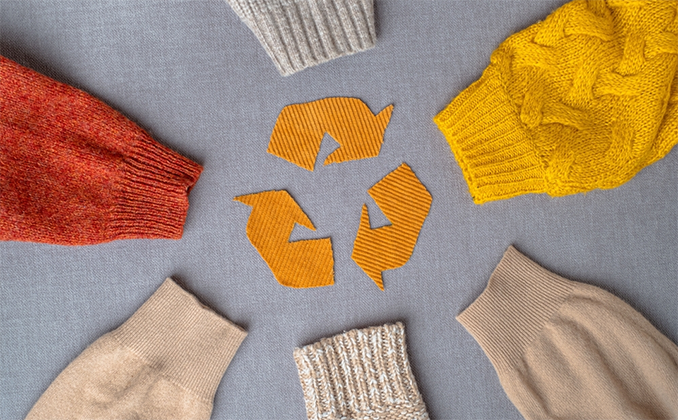Today’s eco-question: Can all materials be recycled? The
Let us be honest, recycling is often the first thing that comes to mind when seeking to shift collections towards eco-responsibility. Without opening the debate here around whether recycling is a real solution or whether it can lead to distortions, let us examine which materials can currently be recycled.
Tradition and innovation
Some will tell you the recycling of wool dates back to the Middle Ages, meaning that wool spinners were the pioneers in this area. Our winter woollies undergo mechanical recycling in order to get a new life.
This technique is also suitable for cotton, which can be sorted by colour, shredded and re-spun to produce a new quality of thread.
Cotton can also undergo chemical recycling and be transformed into new cellulosic materials, avoiding the need to use wood. These are recent technologies but they are spreading rapidly and becoming more present in the collections of knitters and weavers. Linen and hemp are currently being studied to see whether they are suitable for these processes. However, in 2022, these developments remain very marginal.
Leather also has a history of recycling, resulting in the production of synderme, used in soles or the linings of leather goods. Developments are being refined in order to offer softer materials for more versatile applications.

Metals are quick to enter the recycling loop, as they can be recycled to infinity meaning the slightest production offcut is swiftly melted down to be used in another design.
Read also: Smart Key: Recycling – can the fashion sector become self-sufficient in resources?
Responsibility and closed circuits
As encouraging as it is to see an increase in recycling in fashion, an essential statistic cannot be overlooked: only 1% of the materials produced are made from recycling textiles into new textiles. The boom in recycled polyester was made possible thanks to sources from other industries, with PET bottles making up 99% of the raw material.
And yet, if there is one material that has experienced colossal growth in the last 20 years, it is polyester. With such a rich seam of materials to mine, before we start promoting the benefits of recycling synthetics, our sector should continue to invest in research and development in order to reabsorb and regenerate what it has already placed on the market.
Making the initial design of materials as ecological as possible should still be considered a priority lever, as the biggest limit to recycling materials in a closed loop lies at the heart of textiles. Blends of many fibres, the presence of more than 2% elastane, metal or plastic threads, and bonded or embroidered decorations all disrupt the recycling process and can mean that certain textiles are not recyclable.
In addition to their recycled or recyclable properties, we must also check whether these textiles offer a similar resistance to conventional materials. And ensure that recycled synthetics are used only when their technical performance is indispensable, because recycled or not, the release of synthetic microfibre particles remains an important topic of concern.
